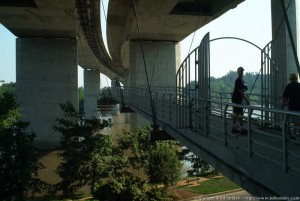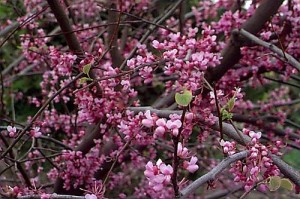Coulson and Tchakerian define the domain of place as, “a hierarchy that includes integration in place, interdependencies between places, and interdependencies among places” (85). The second half of the Geography of the James River Watershed course has truly helped me appreciate the gravity of the impact of place on our daily lives, relationships, and identities. From studies of surface water resources, to species’ habitats, to reviving Richmond’s connection to the river, this semester has focused on our natural place. As geographers, we study the intersection of political, geophysical, ecological, and cultural places which, in turn, helps us understand how man and nature have shaped each other. Through the people I met during my community service, and my growing love of the James, my sense of place has been deepened and my perception of human connectivity is renewed.
While in class we learned about the water quality of local rivers such as the James and the Potomac, we were able to experience what a grade “C” truly meant by going on a river trash pickup for our community service. Though discussing environmental stewardship in book club as well as our blogs instilled a feeling of obligation in me, I was not eager to embark on this experience. However, while I was at Belle Isle, several members of the community who were taking advantage of the bike and running trails spontaneously approached us and thanked us for our work. More than any prior service trip, this interaction demonstrated how in love we are with our place. The community goes to the river for recreation, scientists at the VCU Rice Center for research, and Earth Lodge to understand our dependence on nature. These common usages create a local identity which immediately connects visitors to the river. Kelin wrote in his blog “A Bit of Both Worlds,” about meeting an elderly couple in Pony Pasture and forming an immediate connection based on their common love of place. He says, “It started from there and we must have talked for nearly a half an hour. He and his wife have been coming to the river for years. Since retiring (probably in the past 10 years) they have tried to make daily trips to the river.” This couple is a prime example of how place can unite diverse peoples. Despite the river’s history of separation of peoples based on class, the modern James provides an oasis for Richmond citizens to escape the city and enjoy the natural space together. The enthusiastic thanks we received cleaning up the river, I believe, was not primarily due to the fact that we were picking up trash for a few hours. But rather, the undue appreciation that was shown to us stemmed from recognition of their own love for the river in us.
A view from the pedestrian bridge leading to Belle Isle. The island is one of the most popular areas of the James River Park system and is often used by community members for water recreation and leisure activities.
Sense of place and identity as members of the James River watershed is not only provided by building memories in the nearby parks. Identity as Richmond locals is also bolstered by our familiarity with regional plants and animals. Memorizing 26 local trees for our course was one of my favorite parts of the semester because I was able to recognize the trees we studied in my backyard, on the river, and in pictures I’d seen. I only used to be aware of changes in flora when I traveled with my family to tropical locations and we enjoyed the sound of wind in the palms. Now, seeing the checkerboard bark of a dogwood reminds me of my home rather than being a non-descript “tree.” Adrienne writes about this comforting feeling of recognition in her reflection blog, “I have found that since I have become familiar with the personalities of many of the trees on campus—from the majestic beauty of the Dawn Redwood, to the stately and upright Loblolly Pine, to the delicate and cheerful Dogwood—I have become more observant and perceptive of what is around me. Identifying what is familiar has allowed me to recognize what I have yet to learn.” Likewise, my sense of identity with the Richmond area is not limited to distinct, manmade landmarks such as the Mosque, VCU, or even the river. Rather, subtle choice decorations of nature such as the red bud, the sycamore, and the river birch make Richmond a unique and familiar home.
A close-up of the red bud tree—one of my new local favorites. It is easily distinguishable by its small, purplish blossoms on the branches, and small, heart-shaped leaves.
I discovered one of my favorite poems by Henry Wadsworth Longfellow watching an episode of CSI in the 7th grade. Then, I thought it to be merely a heart-warming, benign piece about friendship that was cleverly woven into the bizarre plot for that evening. Now, I recognize my naïve interpretation and treasure it still, but I have come to appreciate the poem in a new way. After renewing my sense of the concept “place,” melancholy vignettes of human ignorance and limitations complicate the portrait of human connectedness. The oak tree (water, white, red, or willow I wonder?) provided the means for the narrator to rediscover a part of himself which is reflected in the reconnection with his friend. Nature, our physical place in the world, provides a literal foundation upon which we build our human identity. Whereas my midterm synthesis blog focused on the action of environmental stewardship, why humans must be responsible for the environment, this half of the semester has worked to make tangible the ethereal concept of human-nature identity and connectivity. My experiences of heightening my awareness of place as well as serving our local community have made apparent how many of our perceptions and, by extension, our relationships are influenced by place.
The Arrow and the Song by Henry Wadsworth Longfellow
I shot an arrow into the air,
It fell to earth, I knew not where;
For, so swiftly it flew, the sight
Could not follow it in its flight.
I breathed a song into the air,
It fell to earth, I knew not where;
For who has sight so keen and strong,
That it can follow the flight of song?
Long, long afterward, in an oak
I found the arrow, still unbroke;
And the song, from beginning to end,
I found again in the heart of a friend.


